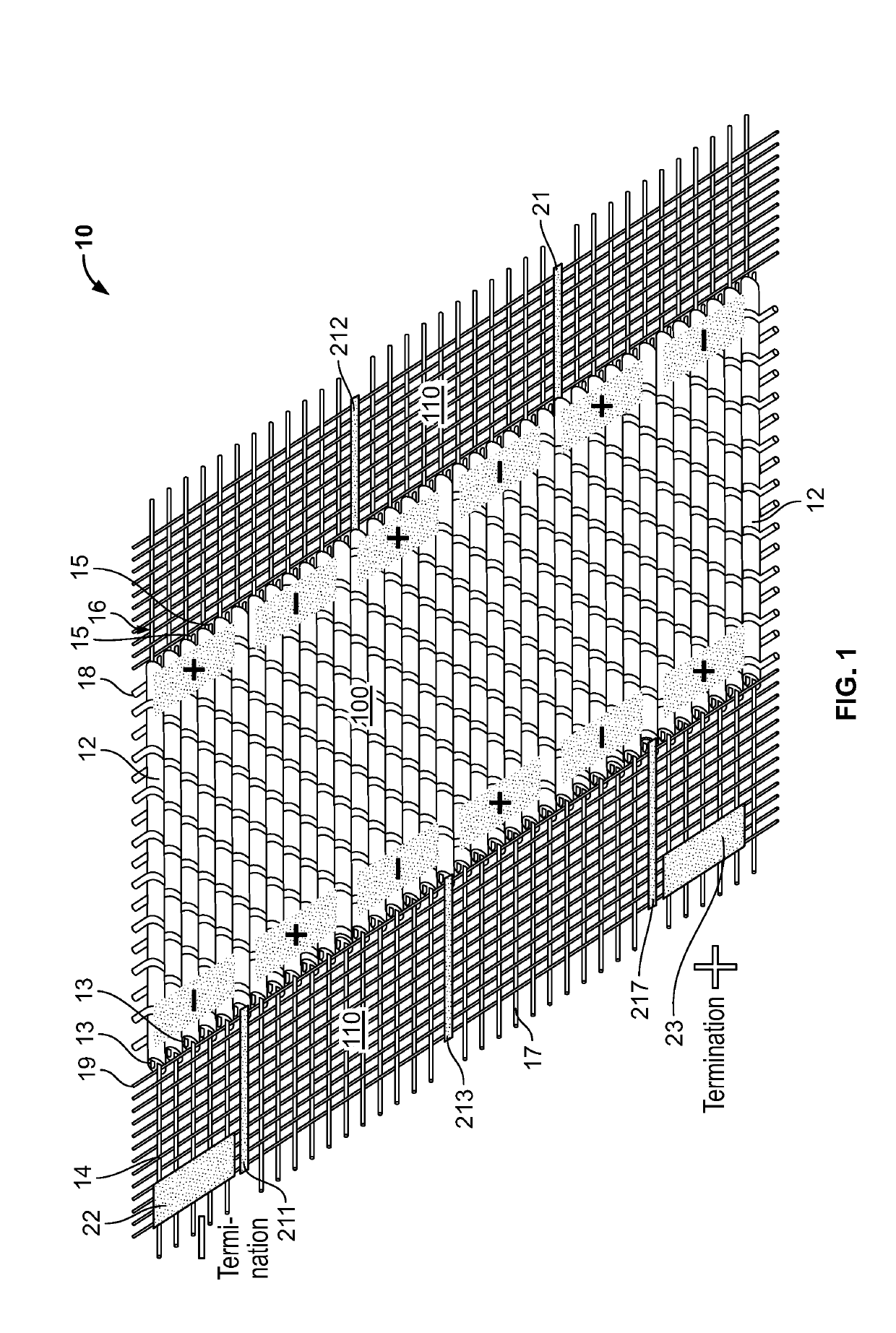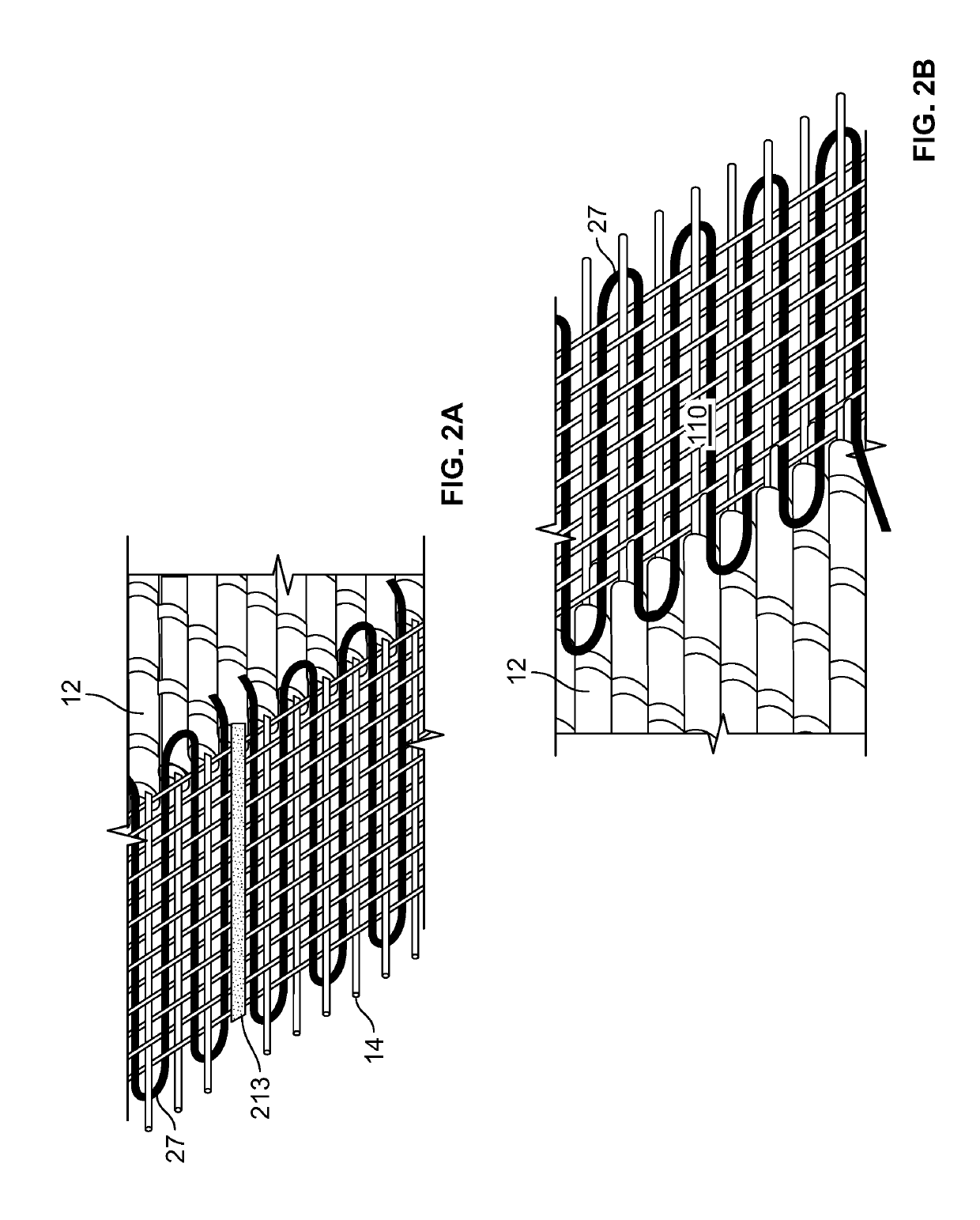Photovoltaic fabric with woven bus architecture
a technology of photovoltaic fabric and bus structure, which is applied in the direction of weaving, selvedges, textiles and paper, etc., can solve the problem of not being able to bus the electrical curren
- Summary
- Abstract
- Description
- Claims
- Application Information
AI Technical Summary
Benefits of technology
Problems solved by technology
Method used
Image
Examples
example 1
[0033]A total of three hundred (300) feet of 2-stranded PV filament are woven into the weft of a fabric with a PV active area approximately twelve (12) inches in length. The fabric measures approximately eight (8) inches in height. This fabric is configured with six (6) series groups of fifty (50) parallel PV filaments.
[0034]The fabric generates approximately sixty (60) mA of DC current at three (3) VDC. It is sewn into a backpack and charges a battery which powers an infrared camera for search and rescue operations.
example 2
[0035]A total of one thousand (1000) feet of 2-stranded PV filament are woven into the weft of a fabric with a PV active area approximately twelve (12) inches in width. The fabric measures approximately twenty-six (26) inches in length. This fabric is configured with ten (10) series groups of one hundred (100) parallel PV filaments. The fabric generates approximately sixty (120) mA of DC current at five (5) VDC. It comprises the back panel of a soldier's uniform and charges batteries for cell phones, radios and computers.
example 3
[0036]A total of ten thousand (10000) feet of 2-stranded PV filament are woven into the weft of a fabric with a PV active area approximately forty-eight (48) inches in width. The fabric measures approximately fifty (50) inches in length. This fabric is configured with ten (10) series groups of two hundred fifty (250) parallel PV filaments. The fabric generates approximately twelve hundred (1200) mA, (or 1.2 A) of DC current at five (5) VDC. It comprises the side panel of a military tent and powers LED lighting, computer tablets and cellular phone chargers.
PUM
 Login to View More
Login to View More Abstract
Description
Claims
Application Information
 Login to View More
Login to View More - R&D
- Intellectual Property
- Life Sciences
- Materials
- Tech Scout
- Unparalleled Data Quality
- Higher Quality Content
- 60% Fewer Hallucinations
Browse by: Latest US Patents, China's latest patents, Technical Efficacy Thesaurus, Application Domain, Technology Topic, Popular Technical Reports.
© 2025 PatSnap. All rights reserved.Legal|Privacy policy|Modern Slavery Act Transparency Statement|Sitemap|About US| Contact US: help@patsnap.com



